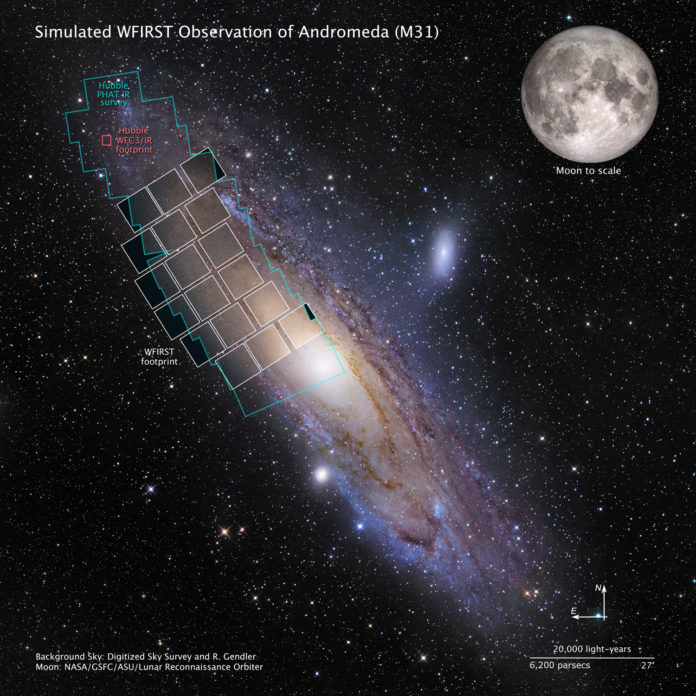Wide-Field Infrared Survey Telescope (WFIRST) is a mission concept to answer fundamental inquiries in both exoplanet detection and dark energy investigation.
NASA‘s current plans call for WFIRST to perform an extraordinarily broad set of scientific investigations: studying the newly-discovered phenomenon of dark energy, measuring the history of cosmic acceleration, completing the exoplanet census begun by NASA’s Kepler Space Telescope and demonstrating technology for direct imaging and characterization of exoplanets.
Recently, the project has passed a complex programmatic and technical milestone, giving the green signal to start hardware development and testing.
The WFIRST space telescope will have a viewing area 100 times larger than that of NASA’s Hubble Space Telescope. Hence, it will allow the detection of faint infrared signals from across the universe.
The telescope will include heritage hardware –primarily Hubble-quality telescope assets transferred to NASA from another federal agency — and lessons learned from NASA’s James Webb Space Telescope – the agency’s flagship infrared observatory, targeted for launch next year.
Its design is already in an advanced stage. And with the passage of this latest key milestone, the team will begin finalizing the WFIRST mission design by building engineering test units and models to ensure the design will hold up under the extreme conditions during launch and while in space.
WFIRST is managed at Goddard, with participation by the Jet Propulsion Laboratory (JPL) in Pasadena, California, the Space Telescope Science Institute in Baltimore, the Infrared Processing and Analysis Center, also in Pasadena, and a science team comprised of members from U.S. research institutions across the country.
